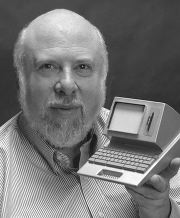Language is the principal – or perhaps the only – tool of the philosopher. For Wittgenstein, and for analytic philosophy in general, philosophy consists in clarifying how language can be used. The hope is that when language is used clearly, philosophical problems are found to dissolve. (Analytic philosophy – Wikipedia)
Bernie Frischer asked me what a tool is in the context of humanities computing. Setting aside a discussion of the discourse of tools and ends, here is a first pass:
- An algorithm for the transformation of data. In the case of humanities computing this would typically be for the transformation of linguistic data or strings.
- A utility program that implements an algorithm (see 1.) or simple set of processes in a form that can be used easily. Generally a tool is not a full blown interactive program like a word processor. Thus Excel I would not call a tool as you can use it interactively and you can use it to do many different things. You can, however, run transformations within it.
- A technique that involves transformative or interpretative practices some of which might be automated on the computer. Thus a technique includes both human and automatable practices. Even more generally one can talk about methods that might be made up of various techniques.
- A interactive environment or game in which one can run a set of transformations for a single purpose. See 2. above. There is obviously a grey area between an atomistic tool that does one thing (just what is the doing of “one” thing) and an environment that is multipurpose. At what point does a tool become an environment for processes that isn’t really ONE tool but more a workbench of tools. My point, however, is that we will call an environment a tool if it is used in a context for one end. Thus Excel becomes a tool if I just use it to sort columns of text.
Now back to the real problem which is the presumption that a tool is utilitarian – that is something used not for play, but for achieving a well defined goal.
